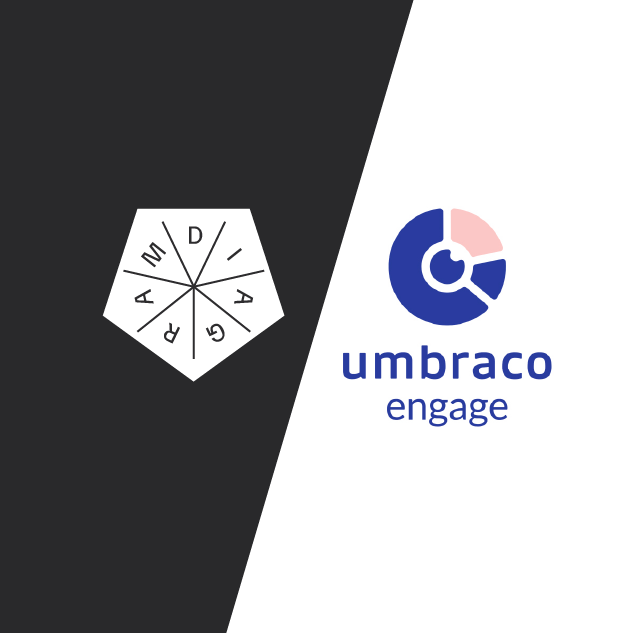Marketing Personas vs. Design Personas: What's the Difference?
Dennis Kardys Head of Design & Development#Digital Marketing, #Design

Learn the fundamental distinctions between marketing personas, design personas and how they can each help you.
Since their emergence in the early 80s, personas have been in the toolbox of savvy designers and marketers as a means to put a face to the people using their products and services. They are a great way to humanize end users and to collect, categorize, and share insights about target audiences. But, though similar in nature, personas as a tool for content marketers can be quite different from the types of personas you'd use as a designer. In order to get the most out of your personas, you'll need to understand the fundamental distinctions between the two and how they can each help you in their own way.
Marketing Personas
Marketing personas represent your target market segments, and they tend to focus on distribution channels, buying behavior, and demographics. They can provide a great means for identifying and understanding the different communities your content can serve. By using marketing personas as a basis, you can begin to set goals around content publication, offering content your users will find useful and relevant. The insights captured through the creation of marketing personas can also shed light on what’s going on in the hearts and minds of your users at different stages of the buyer’s journey.
Interaction Design Personas
Interaction design personas are a bit different. They are less concerned with buying behavior and content offerings and more focused on identifying behavioral patterns and understanding why, how, and in what context your users interact with their environment (typically your website or application). Although design personas also represent a subset of end users, they focus less on demographic profiles, and don’t necessarily map 1:1 to your market segments. Instead, they emphasize the key tasks a person is motivated to accomplish, and the common scenarios they find themselves in.
Exploring the Differences
Here’s an example to help make sense of how the two types of personas are different:
A new library is opening up in town, and you are in charge of making sure it’s the best library for miles around. How can information about library-goers help you plan a great library? You begin with some in-person research, interviewing and observing a representative sampling of people the library is intended to serve. You decide to create personas to capture the most common themes and interesting insights to share with the rest of your team.
Marketing personas help you plan offers and content that map to your audience's preferences.
Your marketing personas will capture snapshots of the type of people your library should appeal to. They will help you understand what types of content your community values, so that you can create offers that will attract them to the library. You might map different types of books to different segments of your audience and then use those groups as the basis for each persona.
For example, one of your personas might include young readers. The information in the young reader persona will reveal information about what types of books they prefer, how often they visit the library, and what types of activities might keep them coming back to the library. Other marketing personas you create might include students, seniors with hobbies, or adults in book clubs. By understanding and catering to the preferences of these groups (both online and on location) you’ll be well on your way to having the most popular library around!
Design personas help you map the needs of your visitors to what you're building.
If you focus solely on appeal, however, you might unknowingly build the world’s worst library. Design personas help you factor your users' motivations and goals into the overall experience. They help you make sure that what you build satisfies the use cases of your audience.
Without design personas, your library might have clowns performing for a room full of delighted, squealing children. Unfortunately, the folks trying to read peacefully in the next room are at their wit's end, irritated by all the honking and giggling. Meanwhile, the amoeba-shaped table tops made from reclaimed pine that appealed so much to the young urban professional demographic fail miserably as a suitable workspace for students doing research and writing notes. The "Paranormal Teen Romance" section has every angst-ridden piece of vampire fiction a goth teen could ever want, but between the unconventional categorical schema and the poorly labeled shelving, The Twilight Saga is impossibly difficult for Carrie, a 44 year old mother of three, to find (perhaps she was mistakenly looking in the "Brooding Undead Fiction" section).

Design personas study the behavioral patterns of people. By understanding their motivations and expectations, and by paying attention to how and why they interact with their surroundings—whether they be physical or digital—you become better equipped to deliver delightful experiences. Using the scenario above, the design persona would be concerned with capturing information about how people in a "studying" mindset might need the library to serve a different purpose than those who come looking for a free, family-friendly weekend event. Once you've capture the range of primary use cases, you can begin to design spaces deliberately around the differing type of user needs and help your personas to efficiently complete their key tasks. Recognizing that finding and checking out books are two of the main tasks for library-goers, emphasis will be placed on understanding how to streamline those processes. In contrast to preference in content, when it comes to making tasks simple for users, the demographics matter very little. If it’s easy enough for a 10 year old to find and check out books, it’s probably also easy enough for a 40 (or 80) year old.
The most important thing: learn from your users
When defining personas for your organization, you may find that the archetypes you create will work for both marketing and design personas. But because they are intended to serve different purposes, this is not always the case. The type of personas you should create depends a great deal on your business objectives and what types of projects you are taking on. The most important thing is that you dedicate time to learning from and capturing information about your users. Without personas to refer to, you risk making design decisions that are based on stereotypes about your users and influenced by the individual biases of your project team. Moving beyond assumed knowledge and focusing on the real and specific needs or your target audience is the most surefire way to deliver exceptional website experiences and content offers.
Related Posts
The New Era of Website Personalization
Personalized websites are the future. Static sites are dying—learn why and how to evolve.

Announcing Our Partnership with uMarketingSuite to Elevate Marketing Analytics and Personalization
We are excited to announce our partnership with uMarketingSuite to elevate marketing analytics and personalization.
Results Matter.
We design creative digital solutions that grow your business, strengthen your brand and engage your audience. Our team blends creativity with insights, analytics and technology to deliver beauty, function, accessibility and most of all, ROI. Do you have a project you want to discuss?
Like what you read?
Subscribe to our blog "Diagram Views" for the latest trends in web design, inbound marketing and mobile strategy.
